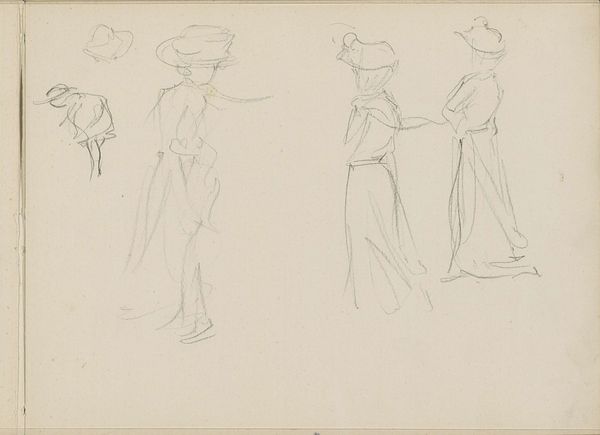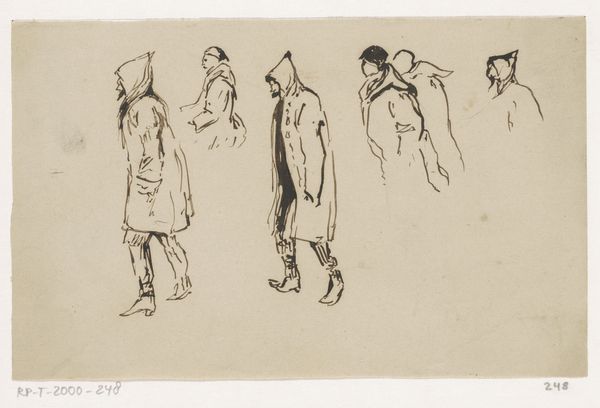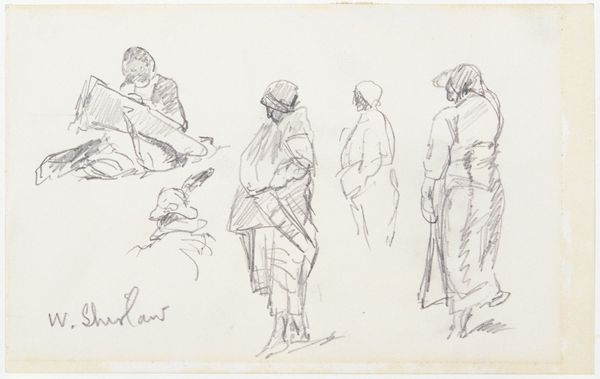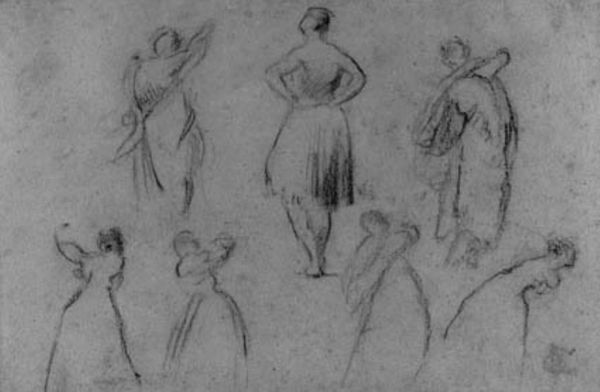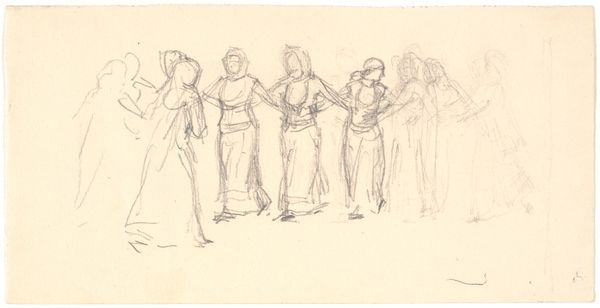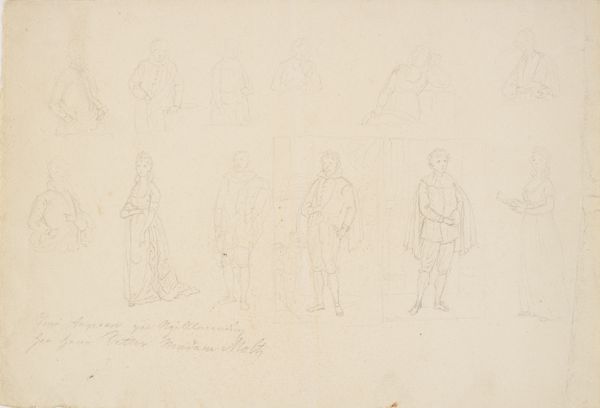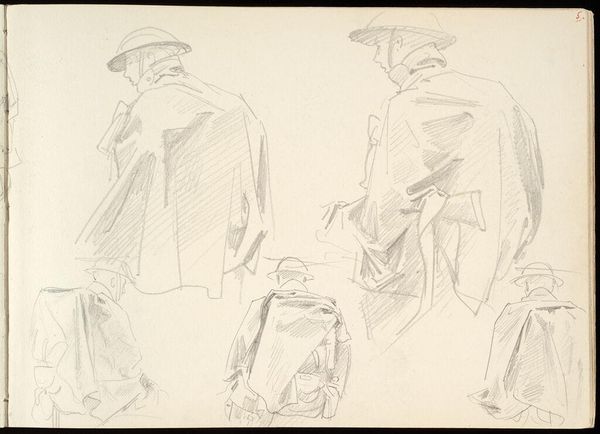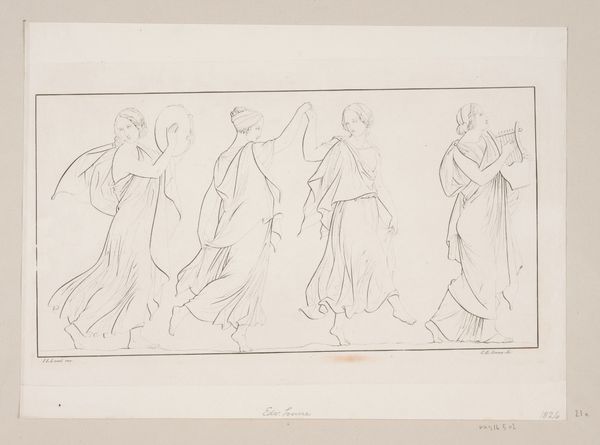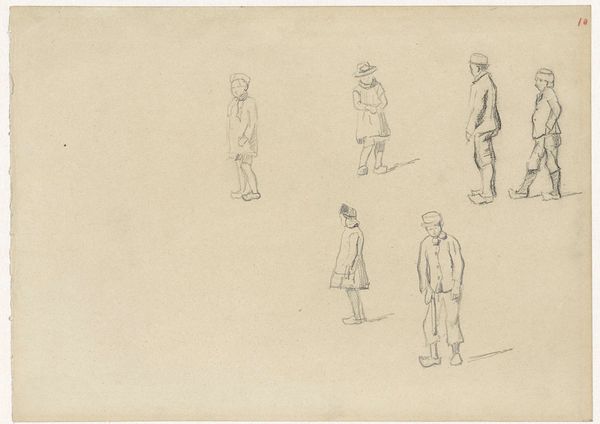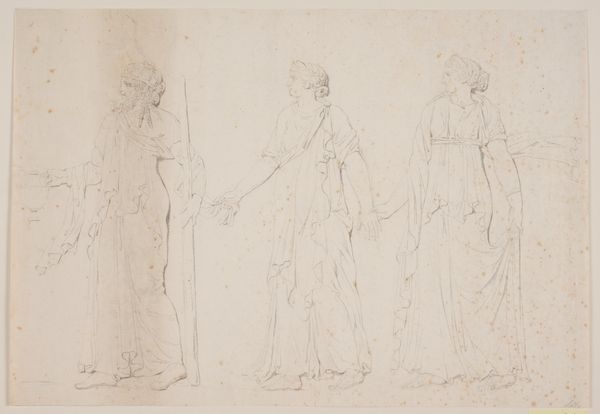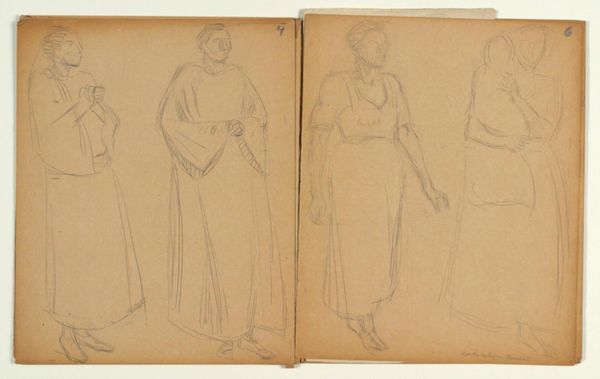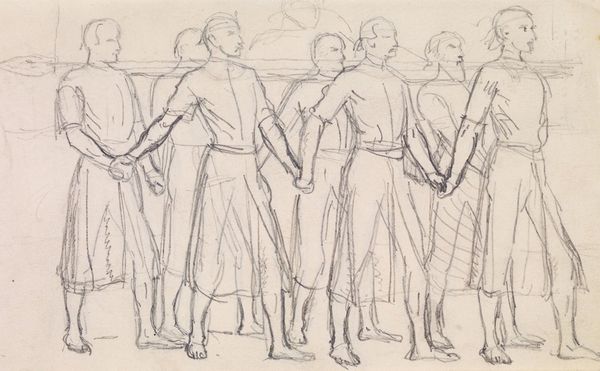
St George Series – Four Studies of Female Attendants for ‘The Princess led to the Dragon’
0:00
0:00
drawing, pencil
#
drawing
#
pencil sketch
#
figuration
#
romanticism
#
pencil
#
pre-raphaelites
Copyright: Public Domain: Artvee
Curator: Here we have a pencil drawing by Edward Burne-Jones entitled "St George Series – Four Studies of Female Attendants for ‘The Princess led to the Dragon’". Editor: Immediately, I'm struck by the stillness and serenity of the figures, despite it clearly being a preliminary sketch. There is a deliberate classical timelessness, the drapery falling in these quiet folds. Curator: Burne-Jones, central to the Pre-Raphaelite movement, frequently drew upon Arthurian legend and classical themes. We see these attendants rendered in graphite, presumably preparatory figures for a larger composition of Saint George slaying the dragon. The composition showcases his preoccupation with line and form. Editor: Precisely. Notice the recurring motif: these classical robes—observe how Burne-Jones skillfully uses subtle shifts in line weight to convey the nuances of light and shadow across the drapery. The tying of fabric adds further volume and definition. Curator: He studied classical sculpture intensely, particularly the Elgin Marbles. This is palpable in his portrayal of these women; they are idealized figures. The faint rendering and averted gazes create a remote beauty, aligning with Pre-Raphaelite aesthetics which challenged the prevailing academic art of their time. Editor: And that positioning with their backs turned. It's a composition choice which emphasizes their role as figures in a larger scene rather than subjects deserving full individual representation. Do you see the political dynamic too? Curator: Well, Pre-Raphaelite art certainly had social commentary imbedded within its ethereal romanticism. I think this study reveals the painstaking methodology and devotion to draftsmanship exemplified by the artists within this sphere. Editor: It's interesting how a preparatory drawing, seemingly simple in its execution, can reveal such depths of aesthetic influence and cultural positioning when we delve deeper. Curator: Indeed. It illustrates that behind even the most visually striking art lies rigorous method and conceptual framework. Editor: It encourages us to remember there are layers to be understood beyond initial visual reception.
Comments
No comments
Be the first to comment and join the conversation on the ultimate creative platform.
